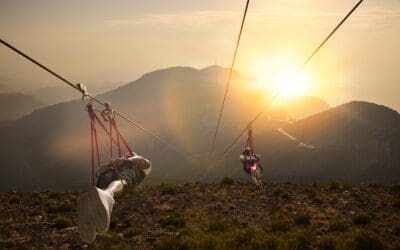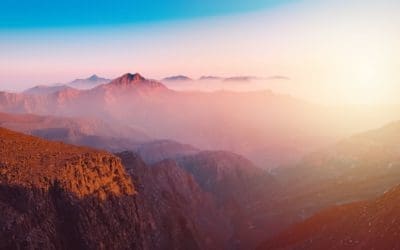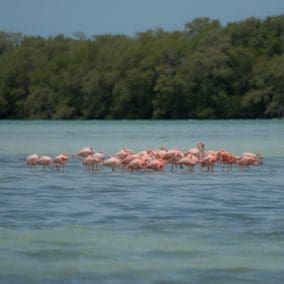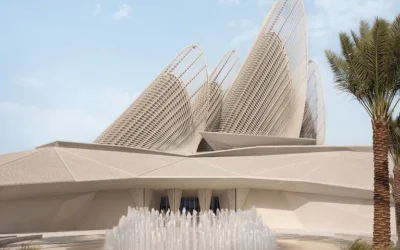Adventure Activities in Ras Al Khaimah: 10 Exciting Experiences for Thrill Seekers
Table of Contents 1. Conquer the World’s Longest Zipline at Jais Flight2. Take an Exhilarating Zipline Tour at Jais Sky…







With a rich history dating back to the Bronze Age, continuously inhabited for more than 7,000 years, Ras Al Khaimah is one of the longest-settled places globally.
The emirate’s enviable archaeological and cultural heritage are preserved in several attractions across the destination, from forts to museums, mosques to villages, appealing to curious travellers and history buffs alike.
Here are some of our top picks:
Dhayah Fort
The only hill fort still standing in the United Arab Emirates, Dhayah Fort dates back to the Late Bronze Age (1600 to 1300 BC) when locals used it for settlement and fortification, and for this reason, the landmark, which was fully restored in the late 1990s, features on the UNESCO World Heritage Tentative List.
Many hundreds of years later in 1819, the fort, which stands proudly on a 70-metre high hill, surrounded by date palm gardens and the Jebel Jais mountains, made its mark in history as the site where the battle between British troops and the local Qawasim tribes took place.
At the base of the fort lies 12 large Wadi Suq tombs dating back to between 2,000 and 1,300 BC, four of which have already been excavated to reveal impressive Southeast Arabian funerary structures. There are plans to transform the entire area into an archaeology park in the future.
Climbing the 239 steps to the reach the fort is well worth the trip, with views of the coast, mountains and surrounding date palms a spectacular sight, but note, the climb is a little uneven and is not accessible for prams, wheelchairs and other mobility aids. There is no lighting either so it’s best to visit during daylight hours.
National Museum of Ras Al Khaimah
In celebration of Ras Al Khaimah’s history, spanning thousands of years, the National Museum of Ras Al Khaimah, located in the heart of the city, houses an impressive collection of archaeological and ethnological artefacts that tell the destination’s story, revealing insights into everyday life and traditions through the ages.
The museum building itself is an early fort, which has been destroyed and rebuilt at least twice and was home to the ruling Quwasim family until 1964 when it became Ras Al Khaimah’s police headquarters and prison. The government finally converted it into a museum in 1987, preserving a diversity of architecture that showcases the emirate’s eventful history, with defining features including the large rectangular defence tower of the original fort, the wind tower, and the central courtyard.
Every exhibit room in the museum is a treasure trove of discovery, with artefacts donated by the Quwasim family and residents of Ras Al Khaimah dating back to the earliest settlers through to the late Islamic period. The interactive ethnographical displays give a glimpse of traditional life in the emirate, its pearl-diving history, date agriculture, fishing industry, farming methods and ancient architecture.
But perhaps the most unusual artefact is the recently discovered Jewish grave head stone found in Shaml, dating back to between 1507 and 1650 and featuring Hebrew inscriptions. This is proudly displayed at the museum to demonstrate how Ras Al Khaimah has always been a welcoming home to inhabitants from all over the world in a country that to this day, promotes tolerance, coexistence and peace.
The museum is a must visit but check the opening times before you jump in a taxi. It’s open from 9 am to 7 pm, Tuesday to Sunday, and closed on Monday.
Al Jazeera Al Hamra
The only remaining historical pearling village in the entire Gulf region, with the rest demolished with the discovery of oil, Al Jazeera Al Hamra preserves a trade and tradition dating back to prehistoric times and has played host to settlers and tribes throughout the ages.
Featured on the UNESCO World Heritage Cultural Tentative List, the village represents thousands of years of classic social strata architecture and town planning in the Middle East, featuring every traditional element of a pearling neighbourhood including a fort and watchtowers, mosque, souq (market), and several courtyard houses with various designs, from small and simple dwellings to two-story residences.
Keeping it local, a sustainable practice now applauded, all structures are built from local materials such as coral blocks and fossilised beach rock, mangrove tree beams, date palm trunks, matting and ropes and layers of seashells for drainage.
They say the devil is in the detail and at Jazeera Al Hamra, look out for the wind tower residence, which has a textbook example of the windcatcher or barjeel, a passive ventilation and cooling system, as well as ornamental archways and other time-sensitive decorative elements preserved in elaborate plaster screens.
Because the buildings are protected and unstable, visitors are asked not to climb on or venture into the buildings.
Also check out…
Historical records reveal a mosque has stood on this site since the 16th century and during renovation work, original architecture built from coral stone and beach rock was discovered and restored.
Occupied for more than 5,000 years and dating back to the Ubaid period, this little village located in a peaceful valley at the foot of the Jebel Jais mountains is known for its natural hot springs, archaeological sites and 19th-century mud-brick forts.
Surrounded by lush date palm gardens, this attractive retreat, built in the 18th century, was once a summer residence for the ruling Quwasim family. Its historical importance dates back to the 1819 war between the Quwasim tribes and the British and Omani forces. During the summer of 1820, the ruling sheikhs of the Gulf coast and the British government met at Falayah to sign a peace treaty, which is cited as forming the foundation of the UAE.


Table of Contents 1. Conquer the World’s Longest Zipline at Jais Flight2. Take an Exhilarating Zipline Tour at Jais Sky…


Table of Contents Jebel Jais Al Marjan IslandAl Jazeera Al HamraAl Wadi DesertMangrove CoastlineWadi ShawkaYou can’t visit a place without photos…


Table of Contents The Geology of Jebel JaisMountains of Time: Exploring the History of Jebel JaisModern Life in an Ancient…


Table of Contents Top Flower Shops in Ras Al KhaimahFNPBlumenTreeRose Flower ShopUAE Flower FarmWhat Makes Ras Al Khaimah Flower Shops…


Table of Contents The Unique Ecosystems of Ras Al KhaimahDesert landscapesMountains and wadisCoastal and mangrove zonesNative and Introduced Species You’ll…


Table of Contents Zayed National Museum: The HighlightsExquisite ArtifactsImmersive GalleriesPlan Your Visit to Zayed National Museum: Getting There From Ras…